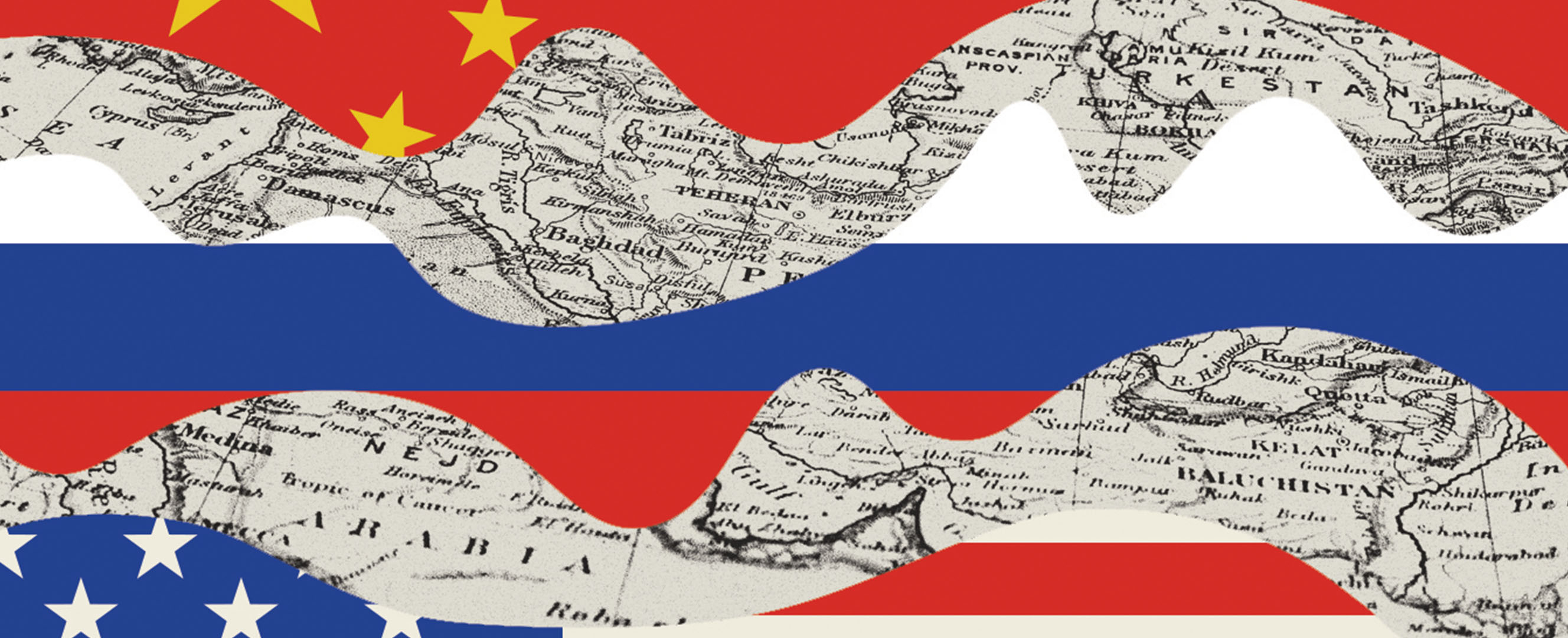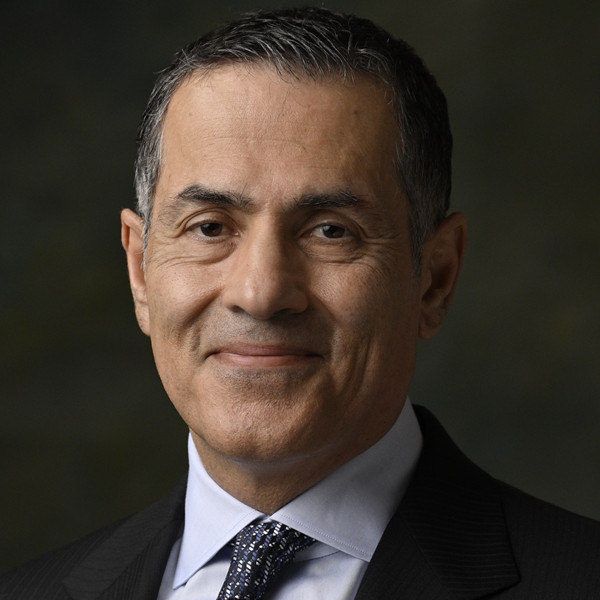A generational shift in geopolitics is creating new possibilities for prosperity in the Greater Middle East
The Middle East is often seen as an arena of unending conflict: ambitious regional rivals vie for advantage as restless young people struggle against authoritarian rule and ailing economies. And yet despite the region’s many challenges—from the Islamic Republic of Iran’s nuclear program to raging conflicts in Palestinian territories, Iraq, Libya, Sudan, Syria, and Yemen—recent developments suggest that the Middle East’s place in the world is undergoing profound change.
The Abraham Accords between Israel and a group of Arab countries in 2020—or the recent rapprochement between Iran and Saudi Arabia—signal axial shifts in regional politics. The most salient impetus for change is the palpable shift in the US outlook on the Middle East. Since the 1979 revolution in Iran the United States has served as the mainstay of the region’s security architecture. It implemented containment first of Iran and then of Iraq after the invasion of Kuwait in 1990. After the 9/11 attacks, the US “global war on terror” brought a sharper focus on the region, leading Washington into wars in Afghanistan and Iraq and interventions in Libya and Syria. Since that high point of engagement and commitment, US attention has shifted to other global priorities, notably managing China’s rise.
Despite US protestation to the contrary, Washington is no longer keen on entanglement in Middle East conflicts—as has become clear to its friends and foes in the region. Its wars in Afghanistan, Iraq, and Libya ended badly; its impact on conflicts in Syria and Yemen has been limited. Washington continues to seek containment of Iran, but not at the cost of direct confrontation.
This realization has meant that the Middle East must conceive and manage its own security to a greater extent. In the absence of ironclad American security guarantees, regional powers deem it prudent to mitigate threats and reduce tensions with adversaries through diplomacy and greater economic engagement. This approach led Saudi Arabia and the United Arab Emirates (UAE) to mend relations with Qatar and restore ties with Türkiye, Iraq, and, most recently, Iran and Syria. The same logic led to the Abraham Accords and greater engagement between Israel and Saudi Arabia. The Gulf monarchies are investing in Israel, Iraq, and Türkiye—and Iran and Syria could be next. Economic statecraft is driven by opportunities but is also the means to build and sustain new strategic relationships.
Integration, not confrontation
This thawing of relations between the walls of chasms intersecting the region since the Arab Spring of 2011 and the 2015 Iran nuclear deal will benefit countries caught in the middle—from Lebanon and Iraq in the Levant to Qatar and Oman in the Persian Gulf. Greater trade and investment are another important result. Both Saudi Arabia and the UAE are investing in Türkiye and Iraq. The UAE’s trade with Iran has grown over the past two years, and Saudi Arabia has hinted that it may invest in Iran if the two countries can normalize relations. There is now talk of major investment in a trade corridor that would connect the Persian Gulf to the Mediterranean, with roads and railways linking Oman to Saudi Arabia and on to Iraq, Jordan, Syria, and Türkiye—with lateral connections to Iran and Israel. The United States is not keen on including Iran but supports a broader Persian Gulf–Levant-India connection to limit China’s role in the region and integrate the Persian Gulf into its Asia strategy.
As far-fetched as such a vision may seem—and there are significant obstacles in its path, most notably the fate of Syria—it underscores how far the region’s geostrategic reality has moved. The Middle East is now imagining economic integration in lieu of confrontation. Security concerns have thus far been an obstacle to such a project, but it is now possible to contemplate a future not dissimilar to present-day Southeast Asia and to see economic integration as a solution to persistent security concerns. Even the United States recognizes strategic advantage in promoting an economic vision for the region.
The Middle East’s most ambitious powers, Saudi Arabia and the UAE, aspire to be notable players in the global economy. These countries need security to build service industries and attract investment and assume the role of the economic hub for the region. This vision is more compelling because the economic boundaries of the Middle East have expanded beyond the narrower security map in the minds of many Western observers. Economic and cultural ties are weaving Central Asia and the Caucasus, the Horn of Africa, and South Asia into what has traditionally been viewed as the Middle East and North Africa region. Consider that today India is the UAE’s largest trading partner. China and East Asia play an important part in this ascendant economic vision.
Geostrategic shift
China is now Saudi Arabia’s largest energy partner, and its investments in the kingdom outpace those of all other countries. Chinese economic ties with other Gulf countries, and with Iran, Iraq, Egypt, and Pakistan, are also growing. China has invested more than $56 billion in Pakistan as part of its Belt and Road Initiative and is discussing similar investment in trade and infrastructure in Iran. For China the Greater Middle East is a critical part of its vision for Eurasia, the landmass that would connect China’s economy to Europe.
Western China borders the Greater Middle East—a region of strategic significance, especially as China’s own domestic economic production moves westward from its eastern Pacific shores. China is hungry for the region’s vast energy resources, but also for its potential as a transit corridor that could balance out China’s current dependence on the Indian and Pacific oceans and the increasingly contentious maritime access points in Southeast Asia and the South China Sea. The Arabian Peninsula is vital to East Asia’s trade with Africa and Europe, and Iran and Pakistan are unique corridors that connect Europe on one side and the Arabian Sea on the other to China through Central Asia or overland into Xinjiang.
Just as the US has shifted its gaze away from the Middle East to Asia, China is looking west to the Middle East. This coupling of the shifting interests of the world’s premier great powers constitutes the most significant change in the geopolitics of the Middle East for decades. China’s deeper engagement will have an economic impact, and—as evidenced by Beijing’s role in normalizing ties between Iran and Saudi Arabia—it will also contribute to a climate of greater economic interdependence within the region.
This geostrategic shift has been bolstered by Russia’s war in Ukraine, too. Russia was already deeply involved in the Middle East through its intervention in Syria’s civil war and its oil-production pact with Saudi Arabia and the Organization of the Petroleum Exporting Countries. The war has reduced Russian involvement in Syria but deepened its ties with Iran. Those ties are most evident in the military arena as Iranian drones and ordnance have contributed to Russia’s assault on Ukraine. But Russian dependence on Iran extends beyond military supplies. Moscow is increasingly looking to the transit corridor stretching from the port of Astrakhan on the Caspian Sea through Iran to the port of Chahbahar on the Arabian Sea to trade with the world. Growing Russian trade has been important to Iran’s cash-strapped economy, but it has also connected Iran with port cities on the southern shores of the Persian Gulf, which are a part of the emerging Russian trade network.
New pipelines
The same dynamic is at work in North Africa and the Levant, this time driven by Europe’s reaction to Russian aggression. As Europe weans itself off Russian oil and gas, it will inevitably depend to a greater extent on energy imports from North Africa, the Middle East, and the Caucasus and Central Asia. This will impact Algeria and Egypt, the region’s gas producers, first and foremost. But its broader implications for economic integration across the Mediterranean will benefit Morocco and Tunisia, which have been at the forefront of supply chains serving European economies. The energy connectivity is translating into plans for a network of pipelines to connect oil and gas from these sources to Europe. Türkiye sees a future as the transit hub for energy pipelines coming from the south and the east and on to Europe in the west. Saudi Arabia and Qatar are contemplating pipelines that would take their own oil and gas, as well as Iraq’s, to that Turkish hub.
These plans depend on resolution of conflicts in and between countries along the way. Economic interest would, in turn, foster interest in continued peace. This is perhaps a distant goal but not impossible to realize. In November 2022 Israel and Lebanon (with Hezbollah’s approval) signed a historic deal setting their borders in the Mediterranean—a necessary prelude to development of their respective gas fields. The United States helped negotiate that deal and, in recognition of these emerging trends, it hopes to supplant its own old order in the region with one that connects India to the Persian Gulf and Israel through a network of ports, roads, and railways. America’s vision is partly aimed at containment of Iran and China. But insofar as it relies on economic ties, it too will confirm the new geopolitical reality of the region.
As has happened so often throughout history, great power rivalries will shape the future of the Greater Middle East. Yet in this case they are working to bind countries closer together economically rather than wrenching them apart. This will open up new possibilities for the region.
Opinions expressed in articles and other materials are those of the authors; they do not necessarily reflect IMF policy.









